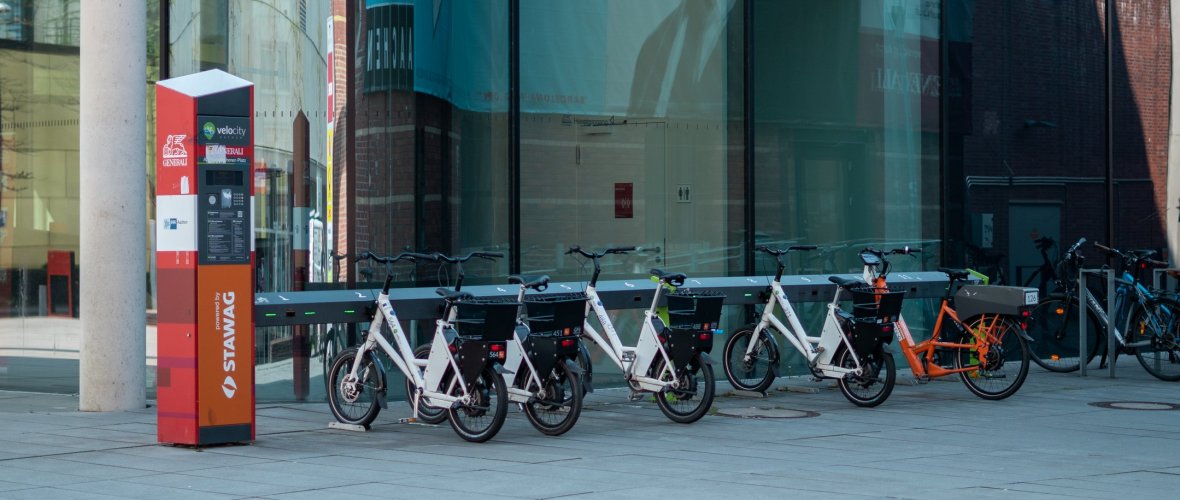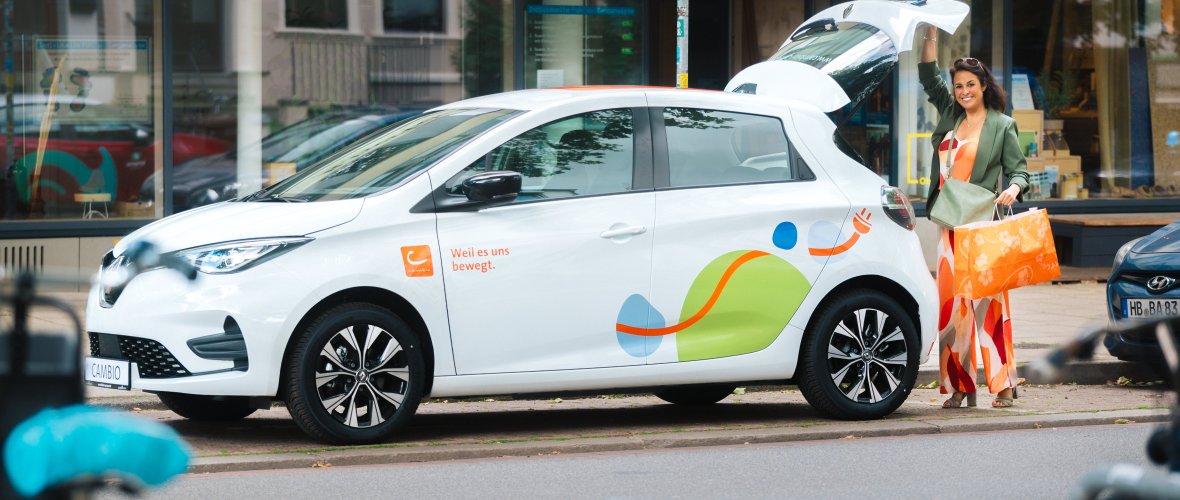The English word "sharing" refers to the shared use of a resource, such as a
bike, e-scooter or car. The term multimodality describes switching to different means of transportation to reach a destination. The proportion of multimodal users in Aachen is growing steadily and sharing services are in high demand. The city of Aachen wants to promote this positive development.

Reach your destination easily - well shared
The following applies to all sharing services in Aachen: more people can use the same motor vehicles, e-bikes and e-scooters to reach their destination at
- whether for moving house, bulk shopping or getting to daycare.
Sharing guidelines

A clear framework for shared mobility
Intermodal and multimodal mobility and shared mobility services offered by independent providers are growing steadily and play a particularly important role as partners in the mobility and transportation transition of urban areas. Clear framework conditions are required to ensure the smooth and successful integration of sharing services into the cityscape and public transportation. The sharing guidelines are intended to create a clear and unambiguous framework for the operation and expansion of sharing mobility services in public spaces. They create transparency and ensure the sustainable, safe and efficient use of shared mobility services.
Mobile stations
Mobility stations are an integral part of integrated mobility development and offer alternative mobility options beyond the private car. In addition, they can strengthen the environmental network by bundling mobility options at bus and train transfer points, but also in the neighborhood. bundling mobility options. In addition, mobility stations are designed accordingly so that users can easily recognize and assign the offers.
As a "mobile region", the StädteRegion Aachen has set itself the goal of promoting a climate-friendly mobility transition and has founded the "NEMORA" network (Netzwerk Mobilitätswende Region Aachen) for this purpose. In this network, a separate working group is dedicated to the topic of mobile stations and multimodality, which coordinates the expansion of mobile stations regionally together with representatives from the City of Aachen, StädteRegion Aachen, the individual municipalities of the StädteRegion, AVV GmbH and ASEAG. In addition, the city of Aachen is developing a concept for neighborhood mobility stations, which will also be set up at central locations in the neighborhoods independently of public transport connections.
Regional mobility concepts
The city-regional mobile station concept (see Annex 1 FB 61/0836/WP18) is divided into a rough concept and a detailed concept based on this. With the help of a location and potential analysis, 76 mobile station locations were identified for the area of the Aachen city region as part of the rough concept, which could be built or expanded in the long term. The potential locations were identified in close cooperation with the municipalities in the region. On the basis of the rough concept, planning applications have already been submitted to the Go.Rheinland special-purpose association, which allow funding of up to 90% of the costs incurred for the infrastructure required for the mobile stations. In addition, individual equipment features (e.g. stele and signage) can be purchased via a framework agreement.
The mobile stations included in the concept are currently located at public transport stops, must be barrier-free and, depending on user potential and available space, offer other services (car sharing, bike sharing, bike repair, etc.) in addition to the classic services such as public transport connections and bicycle parking facilities. The design of the mobile station should be in the state design "mobil.nrw" (see Appendix 2) and thus have a recognition value in other municipalities. A design guide including vector data and an online tool for designing the various elements are available from go.Rheinland and Zukunftsnetz.
As part of the detailed concept, plans were drawn up for 45 stops and made available to all local authorities for the further preparation of funding applications to go.Rheinland. These must include
- Profile for the standardized recording of the inventory
- Profile of the planned elements
- Site planning by means of design sketches
- Cost estimate
The plans for the mobile stations from the detailed concept should be implemented by the municipalities as soon as possible. The expansion of 25 of these mobile stations from the detailed concept is specifically planned for the next three years. Subsequently, the other prospective locations from the rough concept should be considered, adapted and implemented in the following years with the involvement of the NEMORA network's mobile stations working group. The mobility station concept can thus make an important contribution to the regional and nationwide mobility transition.